Since the early days of Vietnam’s history, the Vietnamese have always had to fight against invasions, especially from the armies of various Chinese dynasties. The bronze weapons exhibited in the National Museum of History help give an insight into the weapons the Vietnamese used during the first millennium B.C. These include daggers, axes, swords, and spears. All are weapons employed in hand-to-hand fighting. Handling these weapons required courage, endurance, dexterity, and skill, which in turn made it necessary to develop forms of fighting that could facilitate their effectiveness. It is the beginning of Vietnamese martial arts.
Martial Arts in Wars Against Northern Invaders
Subsequent historical circumstances facilitated further development of martial arts among soldiers and generals as well as among common people. In 938, Ngo Quyen achieved victory over the Southern Han invaders on the Bach Dang River. Vietnam regained its independence after over a thousand years under Chinese domination. A series of patriotic struggles against foreign invaders followed: against the Song (981 and 1077), the Mongols (1258, 1285, and 1288), and the Ming (from 1418 to 1428), and the Qing (1789).
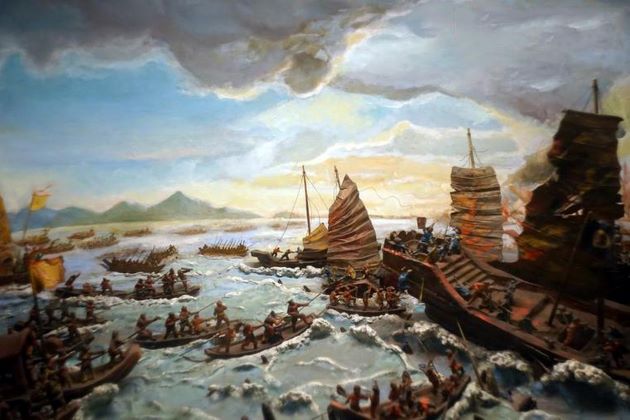
Vietnamese Martial Arts from Buddhism
Buddhism was the official national religion during the Ly and Tran Dynasties (eleventh to fourteenth centuries). In addition to religious study, Buddhist monks were often adept at martial arts because the monks had strict methods of self- control and personal improvement and trained themselves in the mysteries of spirit, reason, energy, and strength. During the Ly Dynasty, monks organized temple and pagoda festivals, which included activities imbued with the martial spirit, such as wrestling and martial arts tournaments (bare-handed or with weapons).
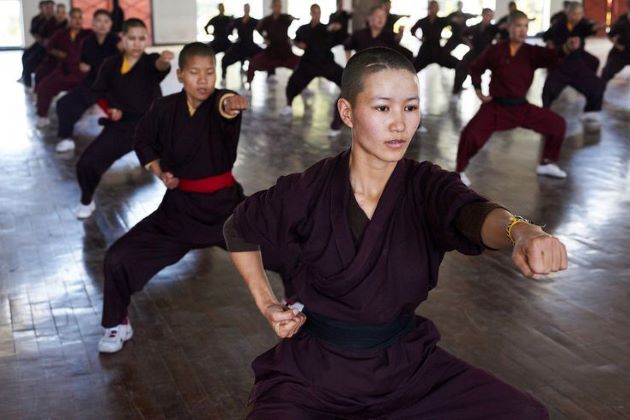
The training for tournaments allowed common people to improve their physical strength and sharpen their senses and their reactions. During 1293, Chinese Special Envoy Chen Fu visited Vietnam. He observed that the Vietnamese went barefoot without fear of thorns. They could run and leap rapidly, climb mountains like the wind, and rowboats quickly. The men shaved their heads. They could dive underwater for several khac (an ancient unit of time) and swim as fast as they could run on land.
Vietnamese Martial Arts from the Fifteenth to the Nineteenth Centuries
From the fifteenth to the nineteenth centuries, martial arts existed at two main levels: the popular level (at festivals) and the royal level (specialized martial arts training and examinations). Common people organized popular martial arts activities both to provide entertainment and to perfect their martial spirit, discipline, efficiency, and self-defense skills. Popular martial arts performances took place throughout the country, primarily at training centers (lo vo) and at annual traditional festivals.
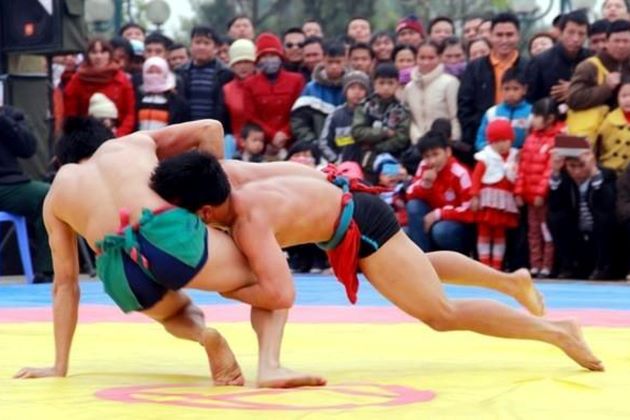
Each lo vo or local festival had its own identity and specific characteristics. One of the most famous for its martial spirit was the Lieu Doi Wrestling Festival in Nam Dinh Province. The martial arts and wrestling events there attracted people from Lieu Doi and from the region. The villagers of Lieu Doi still sing a song that dates back to this festival: “Ngàn năm võ vật đua tài. Vạn năm sông rộng, núi dài tổ tiên”.(People have competed in martial arts for thousands of years. They can protect their country for tens of thousands of years).
Village festivals were the martial-arts examinations of the masses. Villagers bestowed the title of “First Laureate” (Trang Vat) on talented local wrestlers in much the same way as the royal court gave titles to scholars. Many of these men later became leaders of peasant insurrections. Examples include Nguyen Huu Cau and Nguyen Cu, who fought against the Le – Trinh Court in the late eighteenth century, and Lia, who fought against the Nguyen Lords. The most famous of these martial artists were undoubtedly the Tay Son brothers (Nguyen Nhac, Nguyen Hue, and Nguyen Lu. They and their gifted commanders, all of whom were martial artists, led a peasant uprising in the late eighteenth century; they overthrew the harsh domination of the Trinh and Nguyen lords, ending the century-long division of the country. Those heroes trained in “lo vo” with famous masters, many of whom are deified as village tutelary spirits.
Vietnamese Martial Arts during the Nineteenth & Early Twentieth Centuries
During the nineteenth and early twentieth centuries, martial artists who had declined titles in defiance of the Nguyen Dynasty led many of the anti-French insurrections. During this period, the martial arts rose in popularity. Masters secretly transferred their skills to students even when the anti-French movement was less active. They preserved their techniques and practices in books on warfare and military art and in proverbs. These books and proverbs gradually became a martial arts training curriculum for the masses and co-existed with the court’s martial arts canon.
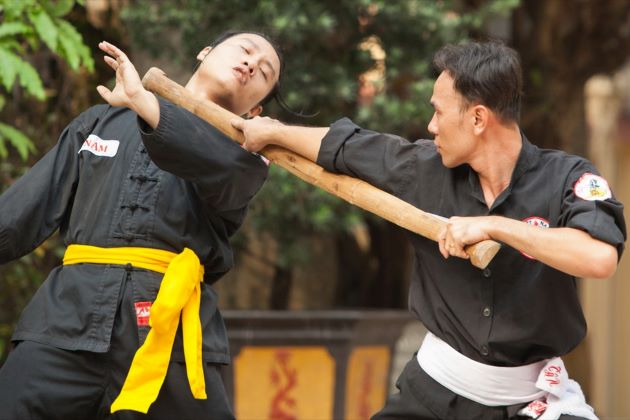
The royal martial arts system also trained soldiers to fight invaders and protect the court. The content was divided into three parts: martial arts for the army, martial arts for study, and martial arts for examinations. At the end of the nineteenth century, the traditional strategies, tactics, and combat techniques of Viet Nam’s military science began to show certain weaknesses when posed against Western military technology. Canons could destroy strong fortifications, and pistols and rifles could overwhelm swords and spears. The new “hot weapons” (hoa khi) were superior to the old “cold weapons” (bach khi). Suddenly, martial arts no longer played a decisive military role; its practice continued but on a much smaller scale.
Vietnamese Martial Arts under French Domination
Under French domination, the court army ceased to train in martial arts. Western sports and gymnastics dominated schools. However, the Vietnamese remained proud of their martial arts masters, who preserved the traditions and developed martial arts among common people. Practitioners from different regions networked with each other and set up numerous new lo vo and new martial arts schools. Centers of martial arts gradually emerged: Thang Long – Ha Noi in the north: Thanh Hoa, Nghe An, and Binh Dinh Provinces in the center; and Sai Gon and the Mekong River Delta Provinces in the south.
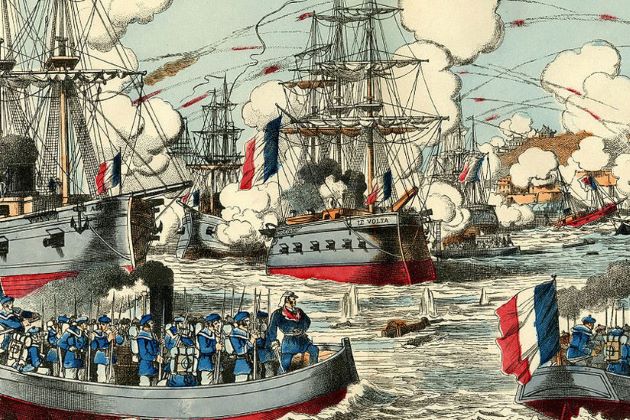
Since the late nineteenth century, boxing and schools of martial arts have also entered Vietnam from other Asian countries. These include Judo, Aikido, and Karate (Japan); Wushu, Shaolin, and Wudang (China): Tae Kwon Do (South Korea); and Pencak silat (Malaysia). Vietnamese have accepted these schools, which have transformed, enriched, and enlivened indigenous martial arts.
Vietnamese Martial Arts & Traditional Asian Medicine
Vietnamese martial arts have also assimilated elements of traditional Asian medicine. Confucianism and other Asian philosophies, as well as systems of ethics, military arts, and aesthetics. The practice of martial arts expresses the concept of a perfect whole embodied in yin and yang and also the notion of the five basic elements that make up the universe. It also reflects the dialectical relations between the physical body, spirit, mind, energy, and strength, between the dynamic and the static, and between and the firm and the flexible. Traditional martial arts are not only sports but also part of the nation’s culture, embracing a heritage accumulated across many generations.



